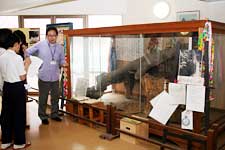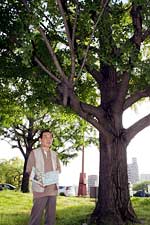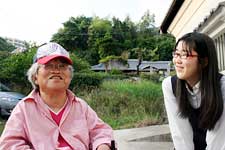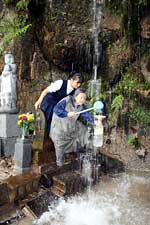Peace Map with locations from picture booksPlaces that hold memories of the atomic bombing
|
Summer vacation is approaching. With our hopes that a lot of people will visit Hiroshima during the summer vacation, the junior writers have produced an original 窶弃eace Map窶・for the city. To create the map, we chose five picture books about the atomic bombing that are easy for young people of our age to understand. We then visited the sites that appear in these books and we interviewed the authors. We hope everyone will pay a visit to these places and think about peace while you're there. We also asked tour guides for visitors from America, Europe, China, and Korea to recommend their favorite places in the city to touch the history of Hiroshima as well as feel Hiroshima's current reputation as an 窶彿nternational city of peace and culture.窶・/p> Recently, the number of international visitors to Hiroshima Peace Memorial Museum has been declining. The impact of the Great Eastern Japan Earthquake and the accident at the Fukushima No. 1 nuclear power plant seem to lie behind this drop in attendance. But we believe that it's important to visit Hiroshima now to understand the horror that nuclear power can wreak. |
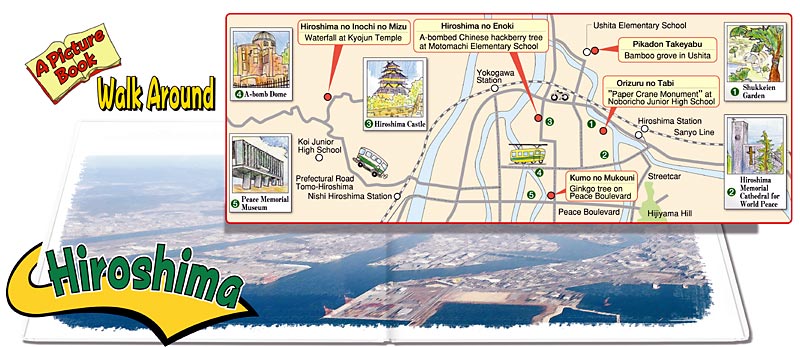
|
| Illustrated by Sayaka Azechi, 16 |
A-bombed Chinese hackberry tree at Motomachi Elementary School:
 |
Second- and third-generation trees offer ties of life An A-bombed Chinese hackberry tree once stood on the bank of the Honkawa River, west of Motomachi Elementary School. A book about the tree depicts students taking care of it after it survived the atomic bombing. Sadly, though, the tree died in 1989. Part of the trunk is on display on the 2nd floor of the school building. The school is now caring for second- and third-generation trees from the original hackberry, and students are rehearsing for a play based on the story of the A-bombed tree. Takashi Ninomiya, 48, the vice principal, said, 窶廬 hope visitors to the school will feel the importance of life's bonds.窶・Please contact the school before paying a visit there. |
Ginkgo tree on Peace Boulevard:
 |
A boy dreams of his homeland The main characters of this book are a Korean boy who lives in Hiroshima and a Japanese girl. The girl helps the boy after he is bullied. As the two are planting a ginkgo nut, the atomic bomb explodes. The boy dies, dreaming that he sees Korea from the top of the ginkgo tree. The story isn't based on a true incident, but two ginkgo trees do stand on the east side of Peace Bridge. The author of the book, Masamichi Mori, 64, a resident of Hiroshima, told us: 窶弩hen they read the book and see the trees, I want people to have a vicarious experience of the story and understand that war is a terrible thing.窶・(Yuji Iguchi, 14, who also served as photographer) |
Bamboo grove in Ushita:
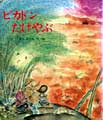 |
Motherly tenderness for survivors of the bomb In the aftermath of the atomic bombing, many people who were wounded took refuge in this bamboo grove. One of them is the main character of the book. Although he was burned from head to toe, he managed to survive. The author of the book, Michio Hara, 83, stressed, 窶弋he bamboo grove embraced the A-bomb survivors like a mother and helped save them. About 40 years ago, Mr. Hara moved to a house that sits near the bamboo grove. After hearing the story from a neighbor, he created the picture book. 窶廝oth human beings and the bamboo trees overcame the atomic bombing and went on living,窶・Mr. Hara said. 窶廬 hope people will feel the power of life in this story.窶・(Yumi Kimura, 15) |
Waterfall at Kyojun Temple:
 |
Continuing to offer 窶徘recious water窶・/p> This book features the story of Toshie Une, 92, a resident of Hiroshima who has continued to offer water at various monuments to the A-bomb victims. On August 6, 1945, the day the atomic bomb was dropped, Ms. Une was unable to give water to the wounded. Explaining why she makes offerings of water now, she said, 窶廣s a survivor, I want to apologize to the victims.窶・/p> In the picture book, Ms. Une is seen ladling out water from a waterfall. She found the waterfall in 1955 while hiking in the mountains. 窶弋he spraying water shone like diamonds,窶・she recalled. 窶廬t made me think of offering that clean water to the victims.窶・/p> Ms. Une stressed to us: 窶廬 want people to feel the preciousness of water and life.窶・(Saya Teranishi, 15) |
